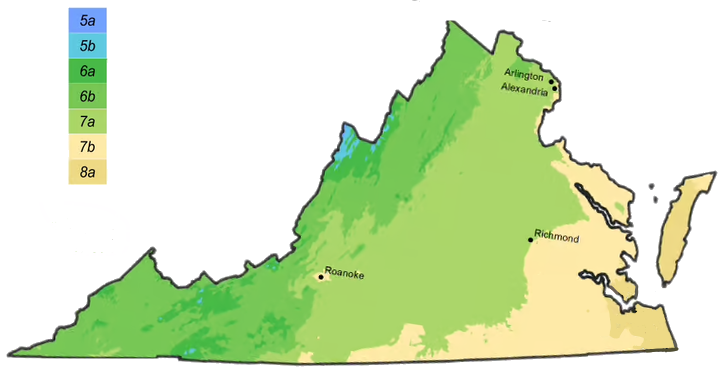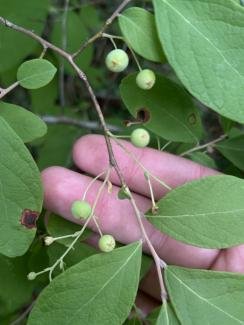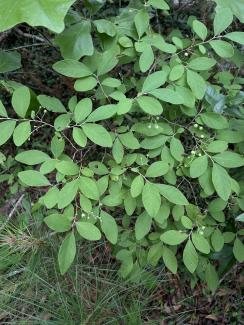
Blue Huckleberry habitat is along the Atlantic coastal plain in woodland edges, fields and meadows near bogs and swamps. This shrub may grow 2 to 4 feet tall and wide and spreads by rhizomes forming colonies that provide shelter and food for birds and mammals. n spring the shrub produces small white to pink bell-shaped flowers followed by an edible blue-black or sometimes white fruit in summer. The fruit hangs in loose groups giving it the common name of dangleberry.
Wildlife value:
This plant provides nectar for pollinators. It is a host plant for Henry's Elfin butterfly (Callophrys henrici) larvae. Adult Henry's Elfin butterflies feed on flower nectar. Butterflies are attracted to its blooms. Its thickets provide cover for wildlife, while birds including grouse, bobwhite, scarlet tanagers and wild turkeys eat the berries.

